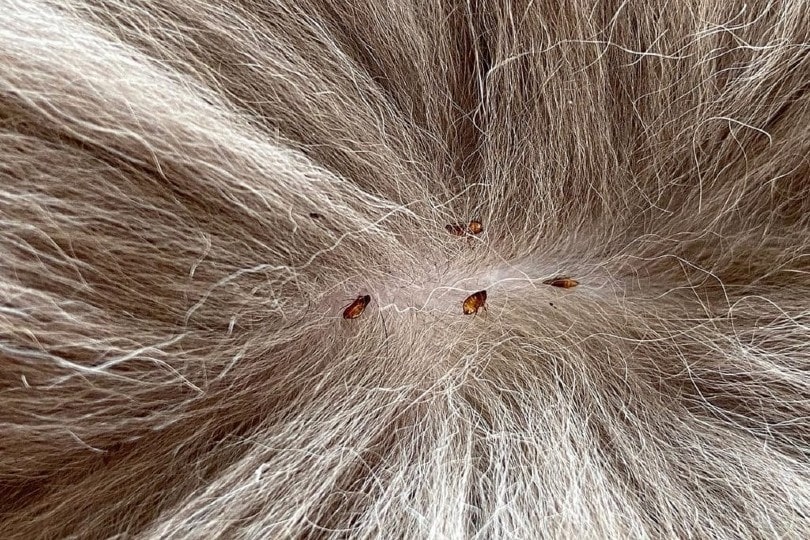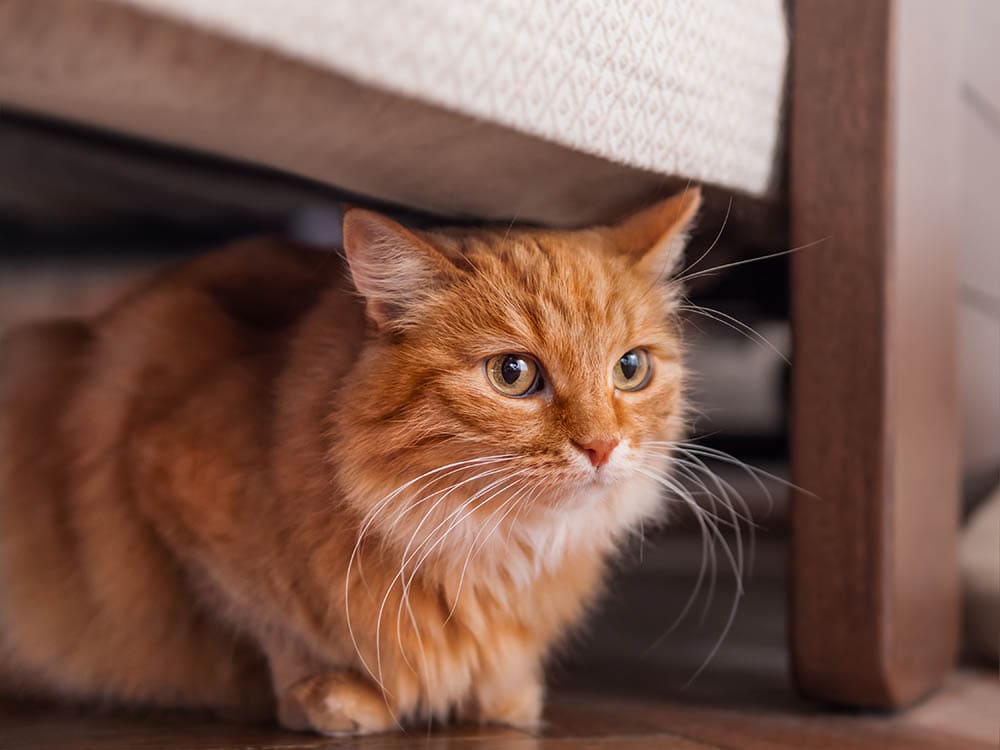
When we let our cats outside in the spring months, they will take the opportunity to explore all the new blooms and sprouts. So, especially when pollen levels are high and allergens are up, even your cat can drag in those pesky triggers and cause all sorts of sniffles and sneezes.
If you have a cat that is an outdoor explorer, there are measures you can take to reduce transmission. Suffering from allergies is no fun, but you can make it easier during warmer months. Here are a few ideas.
What Are Allergies?
An allergy is where your body reacts to something that should normally be harmless, like pollen in the case of seasonal allergies. If you suffer, you are already well-aware how miserable it can be.

What Can the Cat Drag In?
Cats have fur that can trap debris and allergens and then spread them around your home so your indoor/outdoor companion can unfortunately bring in some problems.
Pollen
Pollen is the primary cause of seasonal allergies. The immune system mistakes microscopic pollen grains as an intruder. Pollen enters through the mucous membranes and affects the system. At certain times of year it is hard to avoid this allergen completely but you can take steps to reduce the amount that you are exposed to.
Mold
Mold allergies are triggered by a sensitive immune system response. Mold spores go airborne and enter your body when you inhale. The body treats these spores as foreign invaders and creates antibodies to fight them, resulting in allergies. Mold grows in moist , damp environments and can be found outdoors and indoors.

Dust Mites
Dust mites are tiny bugs that commonly live in house dust. They can cause year-round allergies and are a primary cause of asthma. These mites don’t necessarily come from outdoors, but they can live on enclosed porches and other hideaway spots in the home. If your cat gets under furniture and stirs up dusty air, it can trigger these allergens.
Fleas
Even though fleas are a parasite, cats may bring them inside during the warm months. If you are bitten by fleas, some people can have a worse allergic reaction than others. This can cause redness, swelling, itching, and irritation.
Regularly treating your cat regularly with a flea preventative will take care of this issue. Speak to your vet about the best option for your cat.

The 5 Ways to Help Keep Allergens Out
If you are allergic it can be impossible to avoid the things you are allergic to completely, but reducing the amount of allergens you are exposed to can really help. Your outdoor traveler’s hair can act as a carrier of airborne allergens and spread them around your home , here are some ways you can try and reduce this.
1. Wipe Your Cat Down
Buy a pack of unscented wipes or dampen a cloth. Wipe your cat down, paws and all, before you allow them to come inside from an outdoor adventure. This will strip the existing allergens on the coat to reduce transmission.
You can buy species-specific wipes. These products are explicitly designed for cats, using gentle, pH-balanced formulas.
If you're looking for an easy, safe way to clean your pet well-formulated wipes like Hepper's Wash Wipes might be just the thing. These premium wipes are designed to gently and effectively remove the dirt and grime that sticks to your pets's fur. The hypoallergenic formula is infused with soothing, moisturizing ingredients that are safe for all life stages.
At Pet Keen, we've admired Hepper for many years, and decided to take a controlling ownership interest so that we could benefit from the outstanding designs of this cool pet company!
2. Vacuum Regularly
Not like you don’t clean enough anyway, but vacuuming regularly can get rid of the pollen, dust, and dander, too. It can also do a wonder for dust mites in the home. Use a vacuum cleaner with a HEPA filter.
Don’t forget to dust, either. When dust collects in areas that can be stirred up, it can cause allergens to go airborne. So, get all the nooks and crannies.
Using an air purifier may also help reduce the number of allergens indoors.
3. Brush Daily

Brush your cat regularly outside if possible and away from carpet and soft furnishings. A couple of swipes of the brush can get rid of allergens, dander, and debris. If you keep your cat’s coat clean and combed, it will weed out a lot of potential irritants. Ideally, this should be done by a nonallergic person but if this is not possible wear a mask when grooming.
Slicker brushes get to the skin comfortably while efficiently removing coat impurities. You can also use other brush styles, like de-shedding tools and bristle brushes.
Most pets do an excellent job of cleaning themselves, and cats are no exception. They will spend countless hours grooming, but with the Hepper Cat Brush, they no longer need to spend their days licking their loose fur.
- ONE PUSH RELEASE - This kitten brush / cat brush pops out fur with just a simple press, leaving you...
- DURABLE - Cat shedding can be a tough ordeal. Made of resilient ABS plastic and metal bristles with...
- COMFORTABLE - A cat fur brush with 60 degree angled, fine bristles and rubber stoppers will bring...
The brush is designed to be gentle yet effective, removing loose hair and stubborn knots without any painful pulling. What better way to bond with your favorite feline?
At Pet Keen, we’ve admired Hepper for many years and decided to take a controlling ownership interest so that we could benefit from the outstanding designs of this cool cat company!
4. Wash Your Cats’ Bedding
Wash your cat’s bed, blankets, favorite pillow, or anything else they like to sleep on, regularly with a hot wash.
5. Keep Your Cat Out of the Bedroom
It might be worth considering preventing your cat from going into certain parts of the house so you can have ‘safe zones’ with fewer allergens around. Keeping them out of the bedroom can be particularly helpful. We all know cats like to snuggle onto our beds but avoiding this will reduce the number of allergens you are exposed to when you are trying to get a good night’s rest.

Is It Your Cat You’re Allergic to?
If you seem to be getting the sniffles every time your cat is around, you might not have thought about this. Unfortunately we can have multiple allergies and our allergies can change over time.
If you are concerned you may have developed an allergy to your cat, speak to your doctor. Typically, they use a method called the skin-prick test to diagnose cat allergy. Your doctor will take a sterile probe and prick a small portion of your skin, injecting a liquid. You will be monitored and if you develop redness or swelling, an allergy is to blame.
Signs of cat allergies can vary from mild to severe and include:
If you have a cat allergy, you will have to work out a new arrangement. You may have to make some lifestyle changes and take medication, but coexisting with allergies to a cat is possible in many cases. There are now specific cat foods that neutralize and reduce levels of Fel d 1, the major component in cat allergy. This food does not cure cat allergy and the cat needs to be continuously fed with it to be effective. It only works for the cat that is having the specific food and it doesn’t mean that you won’t react to other cats.

Conclusion
Keeping your cat from bringing in allergens might not be easy, but there are measures you can put in place to reduce the effects. Pollen season can be particularly difficult for many allergy sufferers, so any way to alleviate some of it is an upside. If you think you may be developing an allergy to felines, speak to your doctor about further testing.
Featured Image Credit: Daykiney, Shutterstock










